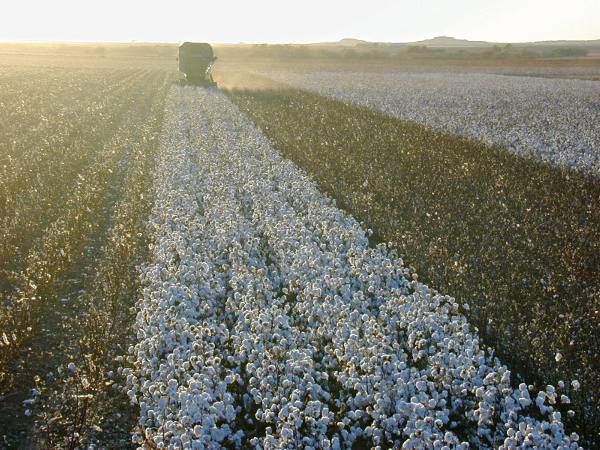November 16, 2010

Rain slowed or halted cotton harvest in the Panhandle, South Plains and Rolling Plains, but in most cases there wasn't enough rain to adversely affect yields, according to Texas AgriLife Extension Service personnel.
"Fortunately, in most places (the rain) was less than half an inch," said Dr. Todd Baughman, AgriLife Extension agronomist based in Vernon. "So with the weather looking like it does, things should clear out and we should be able to get going again pretty quickly."
Baughman estimated that "definitely less than half" of the Rolling Plains cotton crop was harvested by mid November.
"With a big part of the dryland crop, we're actually still waiting on a killing frost to get into a lot of those fields," he said. "Typically we'd already had our first freeze by this time, and we'd already had a lot this cotton sprayed (with desiccants)."
For several reasons -- the lack of a killing frost among them -- the cotton harvest already is running "somewhat late" in the Rolling Plains, Baughman said.
There also was a lot of late-to-mature cotton, and having nearby fields of wheat already up limited the use of desiccants because of the potential damage to the newly emerged plants, he said.
Late planted
The cotton was late to be planted because of weather, and might not have made a crop some years. But nearly perfect October conditions allowed the late cotton to mature, Baughman said. Also, the area cotton had considerable re-growth, which is harder to kill by chemical means.
"A lot of guys who had already sprayed once will still need a killing frost to kill the cotton."
Baughman expected above-average yields on dryland cotton. About 90 percent of the Rolling Plains cotton crop is grown without irrigation.
"Yields have been kind of all over the board, but overall I think we'll be above average," Baughman said. "Dryland, long-term average has been about a half bale (per acre), and I definitely think we'll be in the 300- to 400-pound range across the whole area. Now, we're going to have some individual fields that are way above the average."
In the South Plains, fields dried out rapidly, allowing the cotton harvest to continue, according to AgriLife Extension agent reports. U.S Department of Agriculture offices continued to give incoming cotton samples high marks on quality.
You May Also Like




